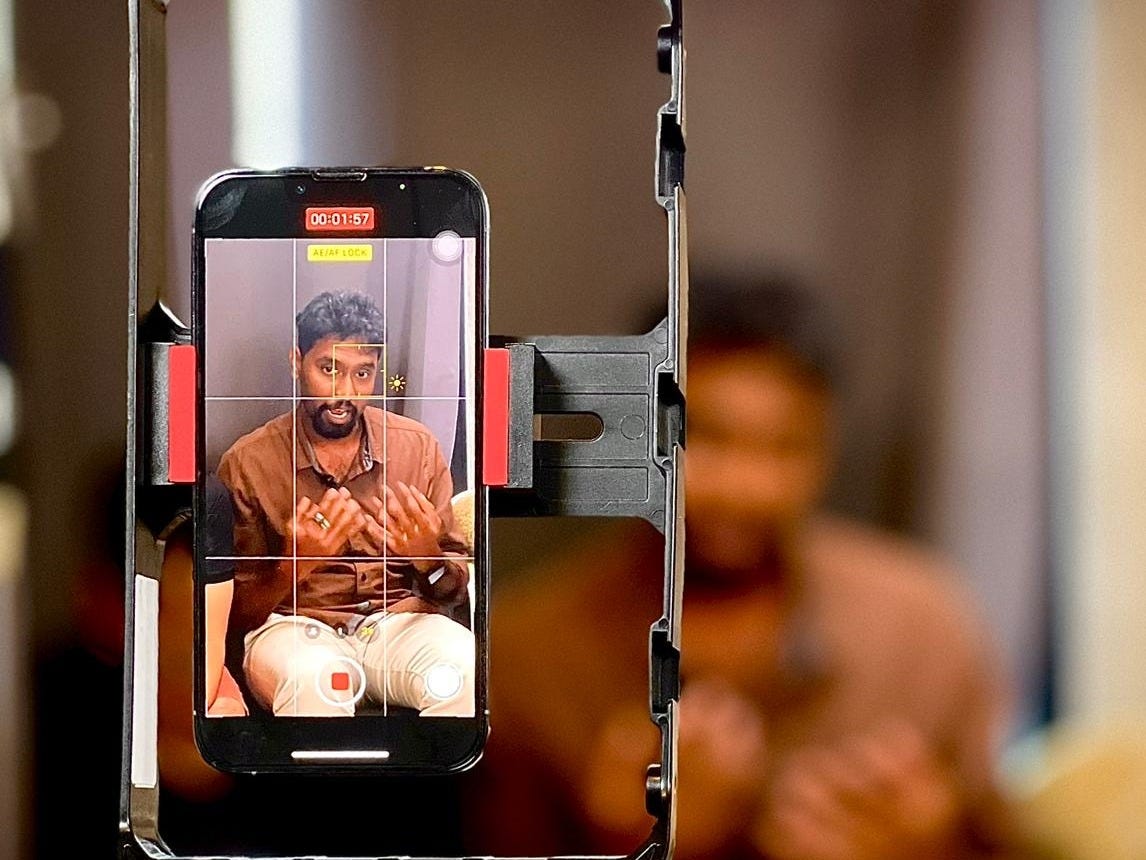Do you freeze up when someone points the camera at you?
One of the realities of being a person of influence in the media era is being able to speak on camera, whether that in a studio or, more likely, to a mobile device. Even major news outlets now use mobile phones for the majority of their production needs.
One of the most daunting prospects for new content creators is learning how to speak on camera, which leads to many quitting before things get good.
I believe God is calling a whole new generation of content creators to rise up from the church and Christian organizations. I want to see you reaching this generation with the powerful word of God, bringing hope and encouragement to young people everywhere.

Here are some tips to help you overcome the fear of presenting to the camera:
Get Comfortable with Technology: Familiarize yourself with the equipment you'll be using, such as cameras, microphones, or presentation software. This will reduce stress during your presentation.
Create a Conducive Environment: Set up a quiet, well-lit space free from distractions. The most important characteristic is a controllable environment. You need to be away from others so you can focus on communicating with the camera in front of you.
Engage with the Camera: Treat the camera like a person. The wonderful thing about modern media is that you are not speaking to a room full of people. Just to one person. That's how Media is now consumed. Look at the camera and realize you are only speaking to one individual on the other side. Make good eye contact with the lens and do your best to be as natural and engaging as you would if talking with someone in a waiting room.
Incorporate Body Language: Move around. Good body language can enhance your delivery and make the presentation more dynamic.
Practice Breathing Techniques: Deep breathing exercises can help reduce anxiety. Before presenting, take a few moments to breathe deeply and focus on calming your mind.
Dress Appropriately: Wearing clothing that makes you feel confident can positively impact your presentation. Consider your audience and the context, but ensure you feel comfortable and professional.
Seek Feedback: After practicing, seek constructive feedback from friends, family, or colleagues. Use their insights to identify strengths and areas for improvement.
Set Realistic Goals: Instead of aiming for perfection, set achievable goals for your presentation, such as making a connection with the audience or effectively delivering your key points.
Embrace Mistakes: Understand that everyone makes mistakes, and it's part of the learning process. If something goes wrong during your presentation, stay calm and adjust. Often, the audience won't notice small errors.
Focus on the needs of the person you are trying to help: Shift your attention away from your fear of rejection and failure. Instead choose to concentrate on delivering value—serving others. Think about how your message can benefit them. Make connecting well with them your primary goal. If they feel connection from you, they’ll ignore any mistakes you make.
And here’s a bonus tip!
Start Small: If possible, begin with shorter, low-stakes presentations to build your confidence gradually. Try posting some stories on social media. They disappear after 24 hours. Your primary audience will be family and friends anyway. It will give you some low anxiety practice.
Following these strategies can help transform your fear into confidence over time!
Medialight is your friend in the mission! We're here to help you improve your comfort and competence as a person in ministry using media.
ANNOUNCING: Our online course, "Find Your Voice - Master Media Communication in just 5 Weeks”, which is a powerful online cohort training will start this June. Sign up for it below!
See you in the Chat!
Here’s today’s question: "What are the biggest challenges you face when speaking on camera, and how do you deal with them?"
Follow up question: "How has your experience with on-camera speaking changed your perspective on public speaking in general?"


















Share this post